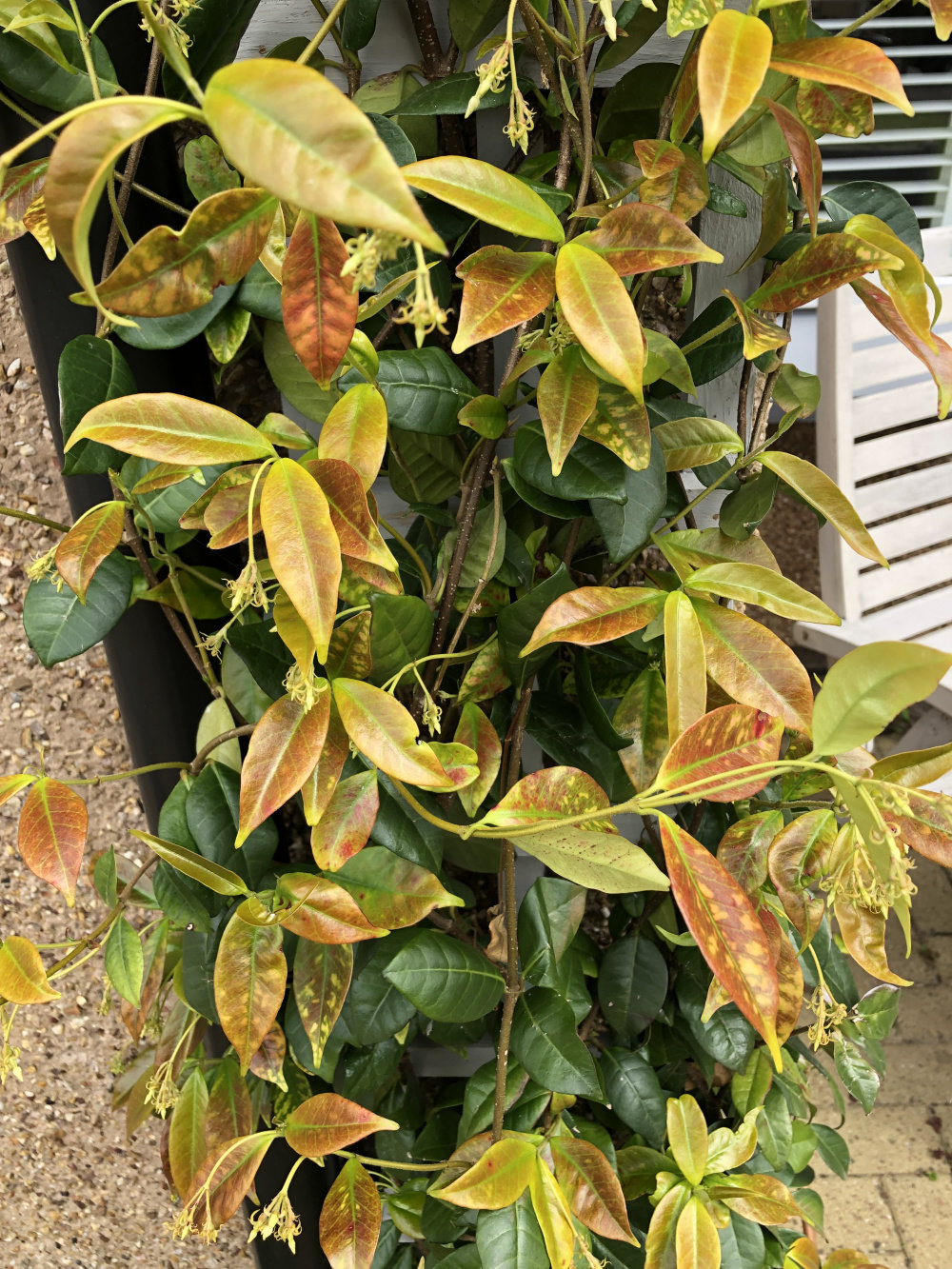Jasmine Plant Fertilizer

Jasmine plant fertilizer
The best jasmine fertilizer NPK ratio is generally a balanced one, either 10-10-10 or 5-10-10. Start fertilizing jasmine after new growth first emerges, but before the flower buds appear. You can also do this two weeks after the last frost. Throughout its growing season, fertilize jasmine every four to six weeks.
How do I get more jasmine flowers?
Jasmine plant not flowering |How to get more flowers on jasmine plant
- Prune your jasmine plant for more flowers. Prune your jasmine plant when blooms are finished.
- Soil for jasmine plant . Jasmine must have a well-drained soil site for proper flowering. ...
- Sunlight for jasmine flowers.
Is Miracle Grow fertilizer good for jasmine plants?
#3. If you go to any farm or farmer's market the only type of fertilizer they will recommend using is this water-soluble solution by miracle-gro.
Do you need to fertilize Jasmine?
Jasmine plants like water. The soil should always be slightly moist, but not soggy. Fertilize Jasmine twice a year with fertilizer that is rich in potassium and phosphorus. During the growing season of spring and summer, liquid fertilizer can be fed to the plant every few weeks.
When should I fertilize my jasmine?
Fertilize these plants once or twice a year, during the early spring or summer season. Any all-purpose fertilizer will get the job done. The best time to apply fertilizer to the soil for your confederate jasmine is once it is done flowering. Just be sure not to fertilize them too much!
Does Epsom salt help jasmine plants?
Yes, there seem to be good, relevant reasons for using Epsom salts for plants. Epsom salt helps improve flower blooming and enhances a plant's green color. It can even help plants grow bushier. Epsom salt is made up of hydrated magnesium sulfate (magnesium and sulfur), which is important to healthy plant growth.
Should I water my jasmine everyday?
A deep watering every few days will keep the roots moist, but not too wet. Mulch around plants to keep the soil cool over summer.
What makes jasmine grow fast?
Indoors, Confederate jasmine grows best in bright indirect or curtain-filtered sunlight except in winter, when they need at least four hours of direct sunlight a day. Night temperatures of 50 to 55 °F and day temperatures of 68 to 72 °F are ideal.
How often should you water a jasmine?
Watering – Jasmine flowers that are in-ground should be watered once a week. If it is unusually dry or hot, increase the frequency, but let the soil dry out in between. If your jasmine is in a container, it will likely require water multiple times each week, especially in the hotter months.
How do you fertilize potted jasmine?
That just slowly dissolve every time you water them. So the best time to fertilize. Your jasmine is
Does jasmine like full sun or shade?
Jasmine grows in full sun to partial shade areas, but the summer-flowering varieties do best in a sunny area. Dig a hole slightly larger than the pot the plant is in and improve the soil before planting by adding compost or other organic matter. Jasmine needs well-draining soil.
Can I just sprinkle Epsom salt on plants?
Adding Epsom salts to soil that already has sufficient magnesium can actually harm your soil and plants, such as by inhibiting calcium uptake. Spraying Epsom salt solutions on plant leaves can cause leaf scorch. Excess magnesium can increase mineral contamination in water that percolates through soil.
Can I use coffee grounds for jasmine?
Jasmine plant prefers slightly acidic soil with a pH range of 5-8. So, supplementing it with coffee grounds can be the best bet. Coffee grounds are rich in nitrogen, magnesium, and potassium that elevate the acidity of the soil.
What does baking soda do for plants?
Baking soda helps the plants become less acidic and prevents fungal growth.
How do you know if jasmine is overwatered?
There are several signs overwatering your jasmine and they include:
- Sagging.
- soft stems.
- Yellowing of leaves.
- Leaves falling off.
- Sponginess in the soil.
- Soil releases water when pressed.
- Brown and corky bumps appear.
Does jasmine grow well in pots?
Can you grow jasmine in pots? As long as jasmine is grown in well-draining soil and gets plenty of sun and water, it adapts well to container gardening ideas. A loam-based compost is a good choice as it holds water well in addition to having added nutrients. Try growing jasmine in a pot against a sunny wall.
Do jasmine plants like to be misted?
Humidity: Jasmine enjoys extra humidity and benefits from daily misting, sitting on a tray of moistened pebbles and/or use of a humidifier. Feeding: During the growing season, feed once a month with a standard, water soluble fertilizer.
How do I make my jasmine grow thicker?
When young plants begin to put out new growth, start pinching out the top half-inch (1 cm.) of the stems by squeezing them between your thumbnail and finger. Pinching the tips, especially in the first two years, promotes rapid growth and lush foliage. Pinch lateral stems as well as the main, upright stem.
How do you keep a jasmine bushy?
Care of a Jasmine Vine You may use plant ties or just weave them through trellis sections. Fertilize the plant in spring just before new growth appears. Pinch off the tips of the vines in the second year to promote branching which will fill the trellis with bushy growth.
How often should you feed jasmine plants?
Once your Jasmine has been planted, you should apply a high-potash feed once a week in summer. This will encourage healthy foliage and flowers, and additionally mitigate any risks of pests and disease.










Post a Comment for "Jasmine Plant Fertilizer "